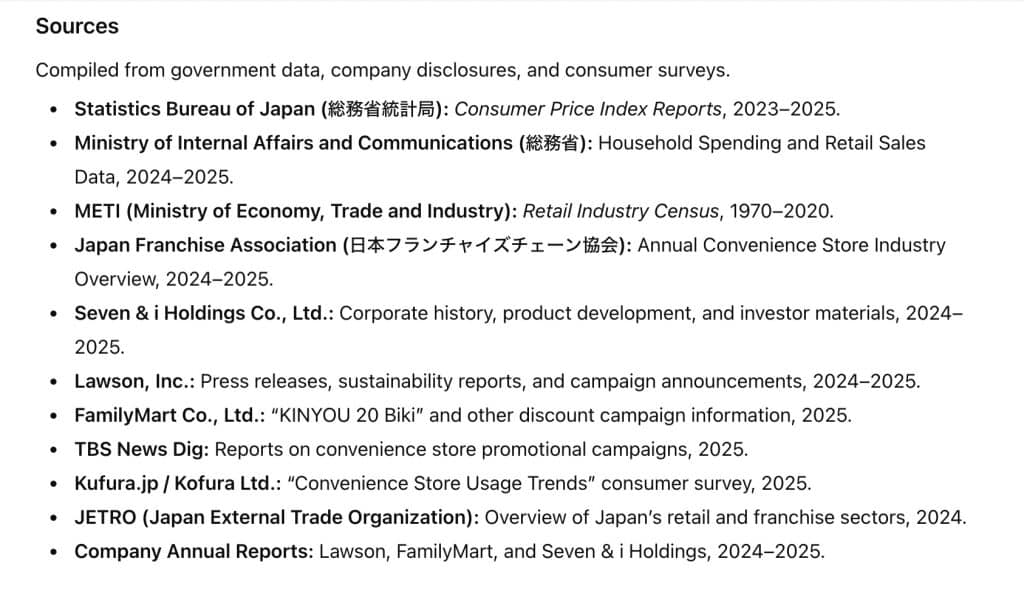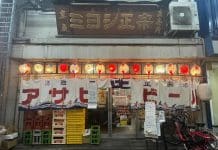Table of Contents
How Rising Prices Are Changing Japan’s Beloved Convenience Stores
YOKOSO! WELCOME! A hearty shout out to all you convenience store lovers out there, both first-timers to Japan and long-time residents alike. If you have spent any time in Japan, you have likely fallen in love with the irresistible convenience of a konbini, the Japanese term for a convenience store. In this article, we will explore Osaka’s konbini to understand how rising prices are affecting shopping, revealing the true cost of convenience and how consumers are adapting.

Over 50,000 convenience stores, known as konbini, can be accessed across Japan, 24 hours a day, 7 days a week! Food, snacks, beverages, and essential household goods abound! A wide range of services are also available: ATMs, shipping services, ticket services, and pay-at-the-till billing services called furukomi (on certain things). From light bulbs to charging cables, iced and hot coffee to tomato juice, rice balls to fried chicken, it’s long been our ultimate outlet.
A Brief History of Japan’s Convenience Store Revolution
From 7-Eleven’s Arrival to Lawson’s Local Success
Japan’s first convenience store opened in 1969, 42 years after the U.S. opened their first convenience store. Ito-Yokado partnered with Southland Corporation to launch 7-Eleven in Japan in 1974. Initially, the stores struggled to adapt to the Japanese market, but the introduction of onigiri in 1978, along with efficient delivery and payment systems, marked a turning point.

By the early 1980s, over 10,000 convenience stores were competing, with each chain offering unique products: 7-Eleven’s onigiri, Lawson’s healthier options and gourmet desserts, and FamilyMart’s fried chicken. Daily Yamazaki and other chains such as Mini Stop and Circle K also became prominent. This competition drove growth, and by 1992, there were over 20,000 stores. Japanese convenience stores, or konbini, became an essential part of society, with Ito-Yokado’s 7-Eleven going as far as to buy out the U.S. franchise. Today, Japanese chains like 7-Eleven, FamilyMart, and Lawson operate globally, in countries including China, the U.S., and Vietnam.
Osaka Spending Trends: The Price of Ready-to-Eat Food
How Much Are Osaka Consumers Really Spending?
According to stats-japan.com, Osaka’s consumption expenditure of ready-to-eat food ranks 60.11 nationwide, with consumers spending an average of up to ¥68,990 per month! Over the past 10 years, konbini have undergone significant changes. Some, such as Circle K, AM-PM, and Daily Yamazaki, have, sadly, dropped out of the race. Others have gone on to become major players in the food and beverage market, accounting for 18% of total sales.

These days, though, shopping at konbini is putting a strain on the wallet. Look around. At a glance, it doesn’t seem to be diminishing our love for these convenient gems-or does it?
With the tension caused in the over 3% spike in prices over the past four-five years, konbini have seen a shift in ‘loyal consumers’. In efforts to keep customers happy, chain stores have ramped up their efforts to provide discounts, sales, and crafty events and campaigns to target customers interests. As for the consumer, where do we go from here? Are there better ways to save? Are there better ways to spend? Are there better places to get more for our moneys worth?
Japan-Level Convenience: Beyond Snacks and Drinks
Seasonal Specials, Hot Foods, and Everyday Essentials
Who doesn’t love a creamy egg salad sandwich? A “Sea Chicken” (tuna fish) rice ball? A “Black Thunder” chocolate bar, anyone? How about a make-your-own “Very Berry” smoothie? Japanese convenience stores may surprise you when compared to the ones you have back home.
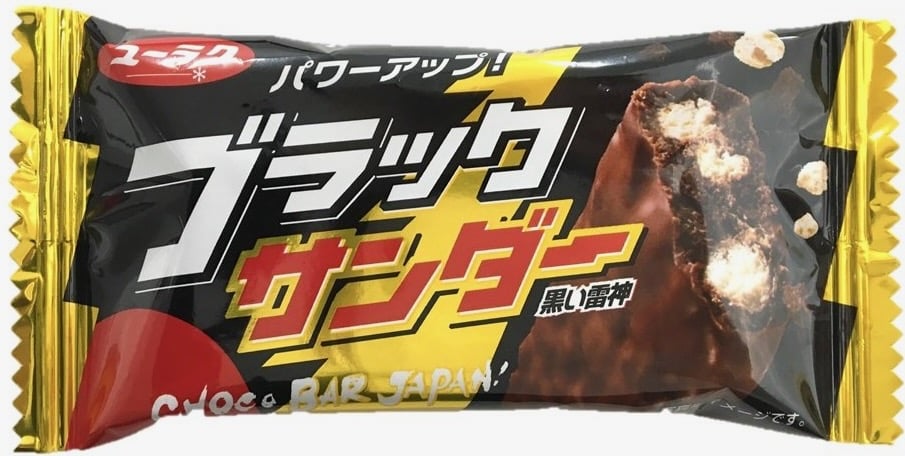
Step into a treasure trove of Japanese-style goodies, where you can find everything you need to fuel your day. From delicious food to refreshing drinks and everyday essentials, Japan’s convenience stores guarantee they’ve got you covered!
Indulge in a quick and satisfying bite, with options like rice balls, sandwiches, chips, and sweets. Or, treat yourself to something hot and savory, like butaman (those irresistible meat-filled buns) or crispy fried chicken from the hot case! While you’re at it, why not try their seasonal offerings? Discover limited-edition bento boxes and tasty treats that change with the seasons. Konbini assure you that you always find something new and exciting to try.
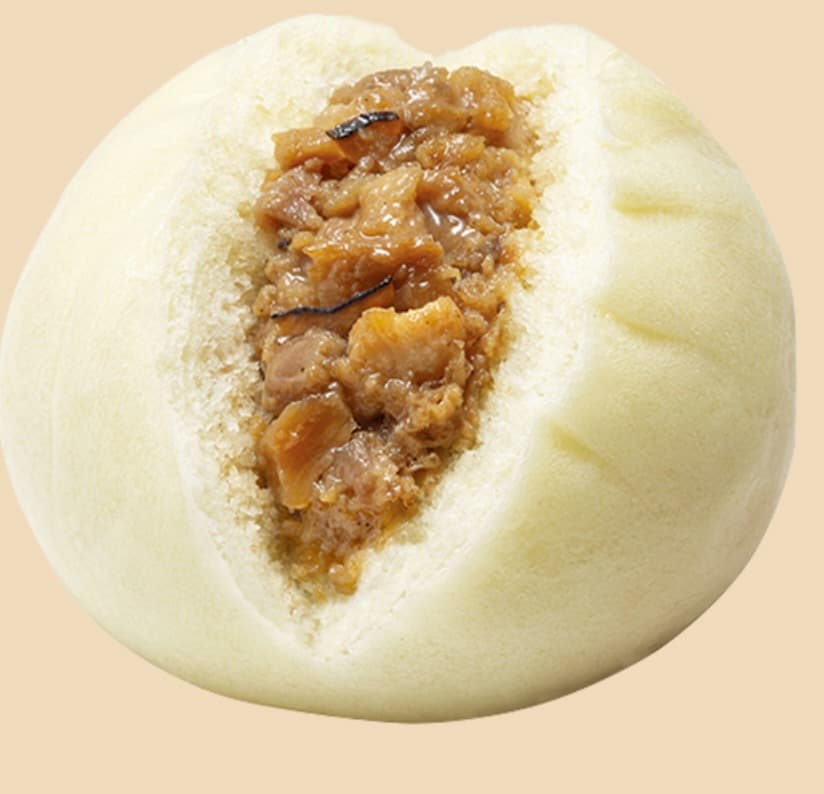
Quench your thirst with a wide range of hot and cold beverages, from rich coffee or invigorating to rejuvenating sports drinks and fresh juice. For those needing something a little stronger, they sell a surprising array of beers and chūhai (wine cooler-type drinks) from 0 to 9%, wines from 11 to 25%, and your usual hard liquors at around 40% alcohol. Having a quick get-together with friends in the park? Grab what you need at the konbini!
And that’s still not all—konbini are a one-stop shop for all your daily needs. Browse a variety of products, including body care items, cosmetics, batteries, umbrellas, magazines, and manga. Many locations even provide a welcome convenience: clean and convenient restrooms, perfect for when you’re on the go.
Pop Culture Power: KPOP, JPOP, and Limited-Edition Tie-Ins
How Konbini Collaborations Drive Viral Sales
Every quarter, convenience retailers are rolling out new, fun ideas in efforts to one-up the competition and score new loyal customers. Big money is often involved as convenience stores pair with whatever is famous and trending at the time.
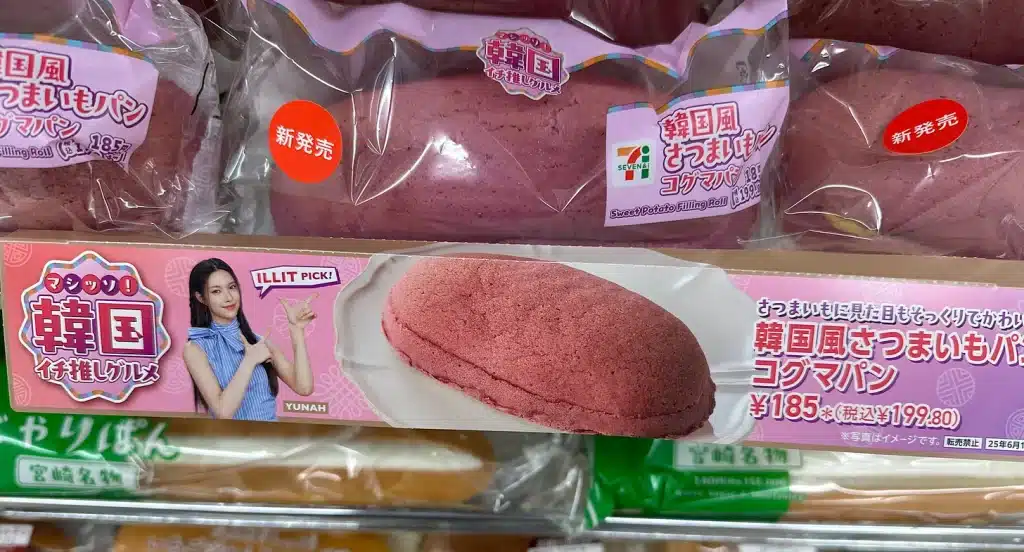
Yoasobi Suntory Beer and Tamagotchi Tie-Ins
All sorts of paraphernalia is sold with connections to KPOP bands, Tamagotchi, Frozen, and more. Once trending, it is the chain store’s hope that it will result in viral sensations online- providing unstoppable traffic to their stores. The convenience store, therefore, sells fun alongside convenience! JPOP sensations Yoasobi are currently featured on cans of Suntory Premium beer.


Viral Konbini Hacks and Internet Sensations
The Fried Chicken Pancake Hack
How about the latest hack that has hit the online speedways, “The Fried Chicken Pancake Hack”: a take on Canada’s famous pancake sandwich? Tourists to Japan are responsible for starting this spree off to roaring accolades: a whole fried chicken bought from the hot counter and shoved into a double set of maple syrup and margarine pancakes, found double-a-set in the bread section! Intrigued, I had to try this myself. It was so good, I had to stop myself from having another! Well played, tourists!
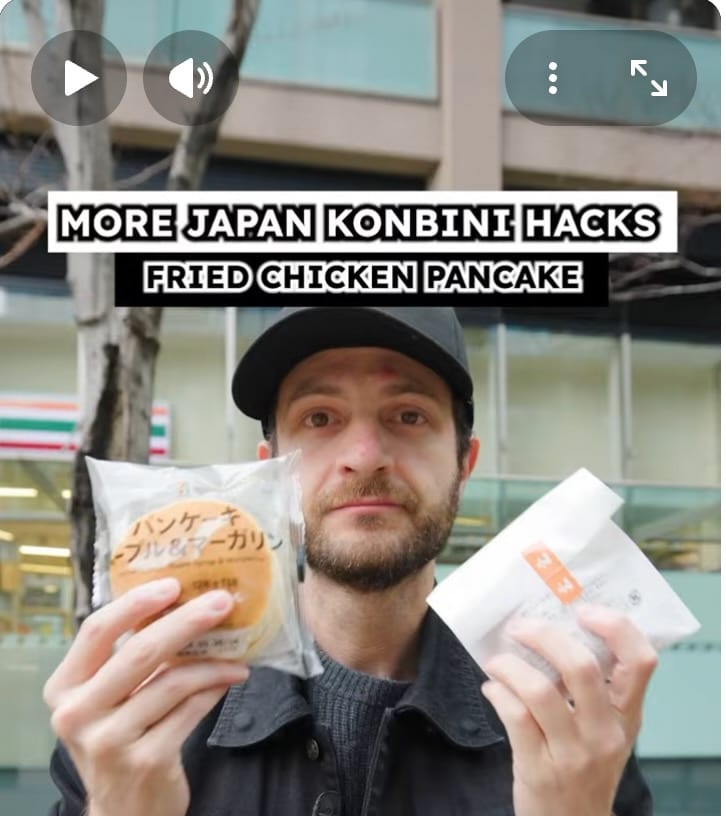
The Big Three: 7-Eleven, FamilyMart, and Lawson Campaigns
Famichiki Red and Sweat Yourself Cool
As the big top three convenience stores (7-Eleven, FamilyMart, and Lawson) compete with each other, there are often mind-blowing campaigns. Recently, the “Three Million Hit” Famichiki Red was launched on June 24th, 2025. The campaign was made to combat the summer heat by introducing the concept: “Sweat Yourself Cool!” A FamilyMart fried chicken coated in a blend of four types of chili peppers and Sichuan pepper oil, designed to “make you sweat for a whole 10 minutes after eating,” was well received, surpassing a cumulative total of 3 million servings within a week of its release (Source:Ukiyo-Journal.com)
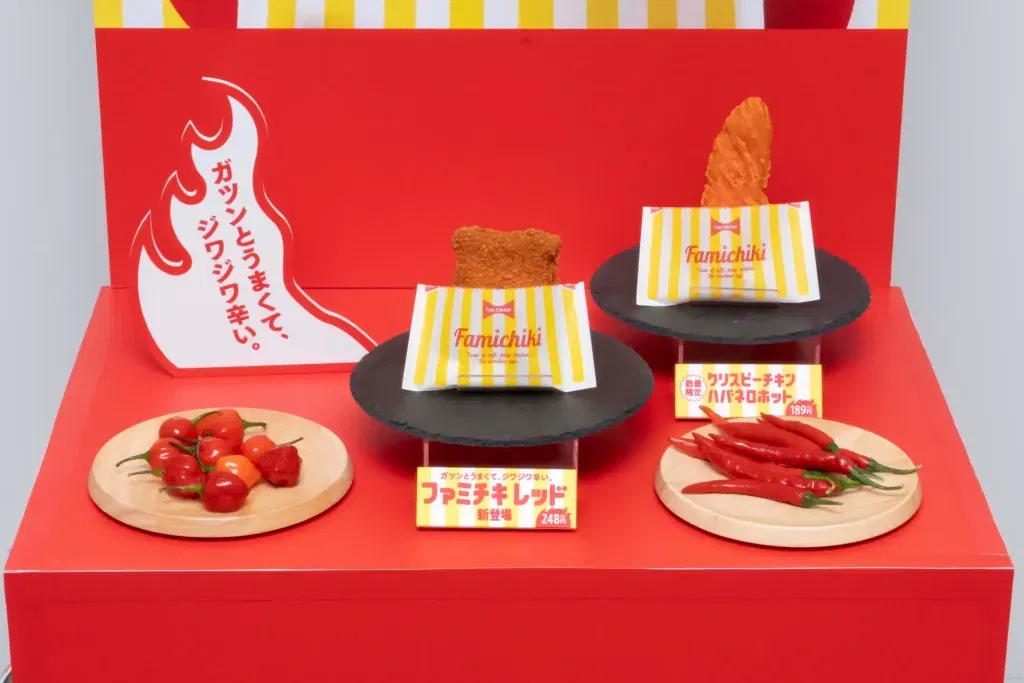
Inflation and the New Reality of Konbini Prices
“Less for More”: The Shrinking Portions and Growing Costs
While these awesome shops promise to have us covered with their extreme attention to detail and product, many customers both foreign and Japanese have been, in the past few years, put off by the “Less (product) for More (cost) mentality seeping in amidst rampant inflation and supply chain issues. Not only that, the world’s third largest economy has consumers feeling the pinch on demand-driven inflation, especially on products whose ingredients —or multiple ingredients-are imported.
Japan’s 2% Inflation Target and Its Real Impact on Everyday Shopping
Since 2021, inflationary trends in Japan reveal a continuous upward movement reported by the Consumer Price Index (CPI), with significant gains in 2022 and 2023. While month-to-month and year-to-year natural variations occur, inflation has persistently remained at or above the Bank of Japan’s 2% target since April 2022 (Macrotrends).
Rising Konbini Costs: Consumers Push Back Online
Recently, in various articles online, Japanese customers can be found inquiring (often indignantly) at the ever-rising price index, with “Increase upon increase” being reported throughout the year. Especially in convenience stores, the uptick is most readily noticeable.
Says one elderly Japanese consumer, near tears: “年金は全然上がらないのに物価ばっかり上がってどうなるのって言う感じ (Nenkin wa zenzen agaranai no ni, bukka bakkari agatte, dou naru no, te iu kanji.) With no elevation in personal income, where do we go from here in the wake of rising consumer prices?” She asks.
“¥850 for Lunch?” — How Inflation Hits the Daily Bento Buyer
Another Japanese consumer exclaimed: “Recently, I dropped into a convenience store near my home that I hadn’t been to in a long time. I was shocked to find rice balls at a whopping 170 yen, yakisoba bread was 180 yen, and sandwiches were 360 yen! It was tax-included; however, you eat about three of those things for lunch alone, right? If you throw a tea in there, you’ll be forced to pay around 850 yen when it’s all said and done. Well, it’s not that I can’t buy it all at one time, but I’m pretty sure that it was over ¥100 cheaper in total last year and even cheaper the year before. Everyone seems to be swarming to konbini to buy normally with no expression about it, but in their hearts, don’t they say, ‘It’s expensive!’ Don’t you think so?“

A Japanese mother of two chimed in: “However, you look at it, supermarkets are much better than convenience stores. If you consider inflation paired with the unreasonably high prices in convenience stores, who can shop there anymore? Also, with the changes in volume, quantity, and quality of foods, and the fact that many close the restrooms to the public, it should be a wonder indeed why more people are not flocking to the supermarkets!“
Inflation Rates, 2021-2025
- 2021: -0.23%
- 2022: 2.50%
- 2023: 3.27%
- 2024: 2.74%
- 2025: (as of September): 2.9%

Several factors have driven the recent inflationary pressure:
- Food and energy costs: higher energy and food costs are major contributors to the CPI increases (food prices, excluding fresh items, saw a 7.6 gain year on year in September of 2025).
- Yen depreciation: the weakened yen has raised import costs.
- Shift from deflation to inflation: The post-pandemic global inflationary climate has acted as a catalyst towards the upper trend of continuing inflation since 2021.
Market Analysts Reply to Online Backlash
Market analysts reply to online backlash with*: “It is a well-known and natural occurrence in business that convenience stores are more expensive than supermarkets, supermarkets more expensive than drugstores (and other markets in Japan that are considered very cheap), drugstores are more expensive than discount stores, and discount stores more expensive than recycle shops.“
“There should be no surprise here; it’s always been a matter of course. It is naturally accepted then that the prices vary depending on the type of business you visit.
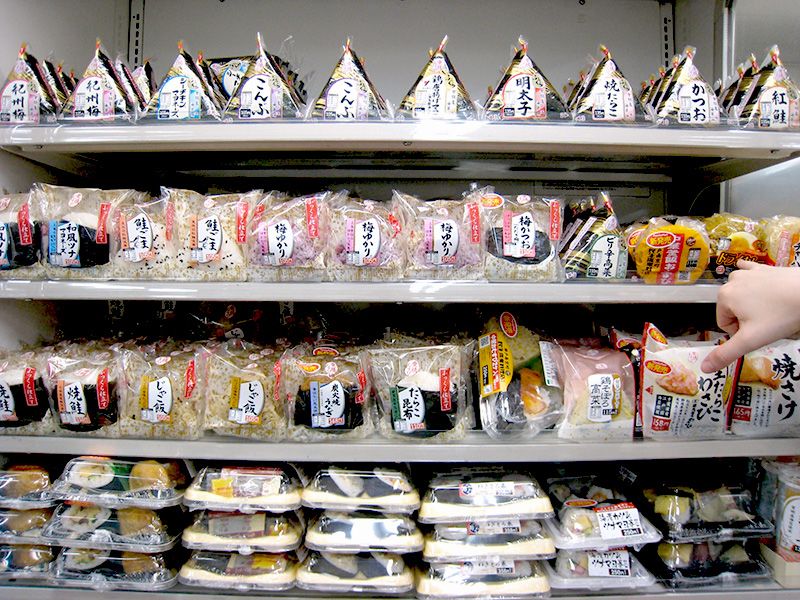
“It’s not the fault, therefore, of convenience stores that the price is high. It is the misguided mind of the consumer to find such fault. In reality, the convenience stores aren’t ‘expensive’; the grocers (who move a large volume of product at lesser prices yet still ring a profit) are simply cheap or cheaper in any economy, whether inflated or otherwise.”
*Translated from various online sources in Japanese
Konbini attempt to “Do their Part”
Lawson’s Discounted Onigiri
Recently, konbini in Japan have attempted to reach out to patrons amidst the tide of rising prices. Though their prices have risen nominally with inflation, they have followed supermarkets’ cue of including discounts and time sales.
Lawson Store 100 has an ongoing sale: 40% of all their rice balls, with favorites like tuna mayo and grilled salmon, are selling for up to 10 percent less than average.
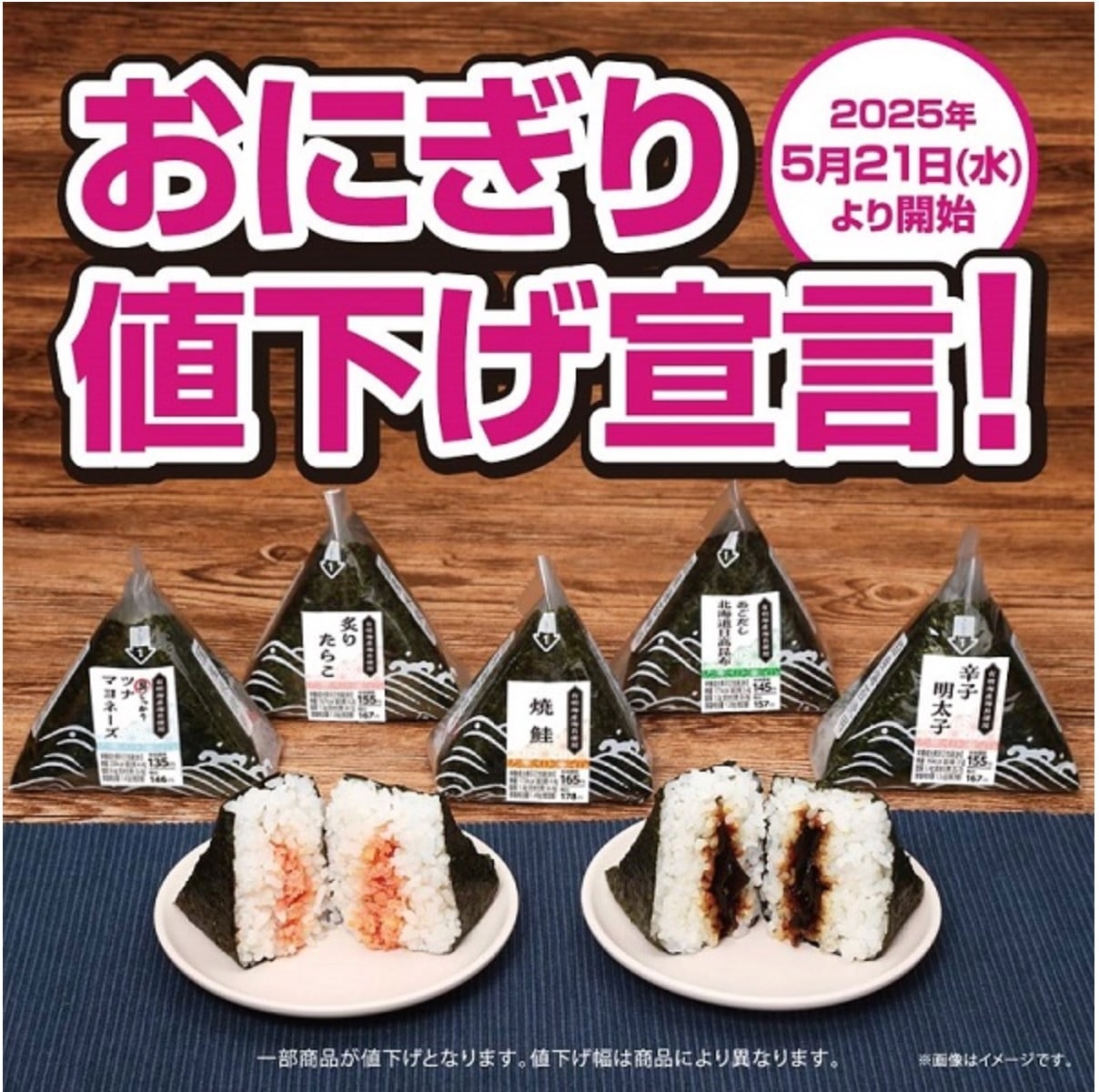
FamilyMart’s Kinyō 20 Biki 20-Yen-Off Fridays
FamilyMart has launched its ‘金曜20引き (Kinyō 20 Biki / ‘20 Yen Off Every Friday’) campaign with the slogan: Bukkadaka demo O’kyaku wo tsunagi tame! (‘Our priority is maintaining our connection with customers despite rising product costs.’) Source – TBS News Dig). Most items reduced are household ready goods such as eggs, milk, natto, and so on. Regular-priced eggs may be soaring at around ¥345 per pack on any other weekday, but on Fridays, they go for the lower ¥325.
7-Eleven’s “Eco-da-ne” Campaign
7-Eleven started a “Real Price Reduction” campaign within the last year to increase the amount of ingredients in a marketed item without changing the price. Eco-dab-ne (エコだ値) is another price‑reduction initiative by 7‑Eleven in Japan, which was launched nationwide in May 2024. It targets items whose sale or consumption deadline is approaching and offers them at a discounted price to avoid waste. Products that have this discount carry a special green sticker (instead of the usual nehiki (値引き) sticker) to emphasize the environmental/food‑waste angle.
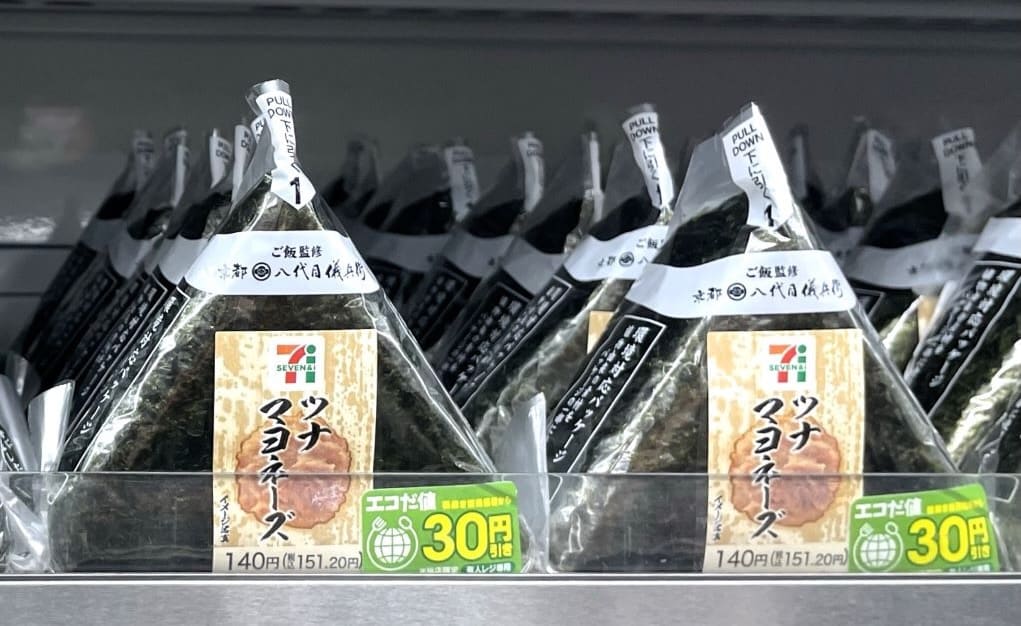
The Hidden Cost of Climate: Energy Crisis and Cooling Bills
Record Summer Temperatures and Rising Electricity Costs
Energy crisis and Global warming are also said to create rising prices. Convenience stores have had to go to great measures such as these to generate more patrons to mitigate losses caused in times of energy crisis. In the summer of 2025, for instance the national average temperature was a record-breaking 2.36°C higher than the 30-year average.
Many convenience stores loose foot traffic during these sweltering months, suffering losses in sales while paying enormous costs on cooling their stores.

Some have even tried “Cool Trend” campaigns, aimed at offering free ice towels, misters, and “Ice Pillars “at the entrances of their stores to entice patrons to come in, cool down, and buy drinks and quick food. As costs mount for the industry, the patron inevitably pays more.
Case Study: Top 10 Items Osaka Consumers Have Cut From Their Konbini Trips
Konbini are (in theory) places one could, in the past, easily drop in on at anytime. Possessing most of the things one needs, at a decent enough price, they have been indispensable for modern people. Once powerhouses of the economy, they too are facing a crisis unknown in times past. Konbini are losing money and patrons amidst rising costs.
As prices continue to rise, the average person wants to cut the household budget however possible. These days many people have fewer opportunities to use the convenience of such a store than ever before.
KOFURA LTD. Highlights this exact phenomenon in their recently conducted case study-questionnaire. A survey of 430 men and women in their 20s to 50s on the theme of things they have recently stopped buying at convenience stores produced a list of ten common things no longer purchased. Ranked from 10th place to 1st place in the list below.
| 10th: COFFEE (sold in cups) tied with INSTANT RAMEN | 9th: ICE CREAM |
| 8th: DAILY NECESSITIES | 7th: ALCOHOLIC DRINKS |
| 6th: RICE BALLS | 5th: BREAD & PASTRIES |
| 4th: SNACKS | 3rd: BENTO (box lunches) |
| 2nd: SOFT DRINKS | 1st: SWEETS |
Source:(Kufura.jp/life/cost)
It may be a point of interest that tobacco products didn’t even make the list! I suppose that’s still a number one buy with consumers.
Voices From the Aisle: Real Konbini Customers Speak
The aforementioned case study also revealed a few heartfelt sentiments sent in by customers as their reasons why they stopped buying certain items.
Bento
“I used to buy bento boxes because I could eat them right away when I was tired or had a hard time making dinner after work , but the amount of food has decreased while the overall price has increased, so I try to make my own food at home.”

Coffee
“I used to be in love with the ¥100 deal that convenient store cup coffee used to be, quality too, cheaper than Starbucks by far. But when the price kept creeping up, I couldn’t quantify spending so much on a single cup. KALDI will sell you a fresh bag with enough for a month’s worth for what I began spending at convenience store prices in a single week!”
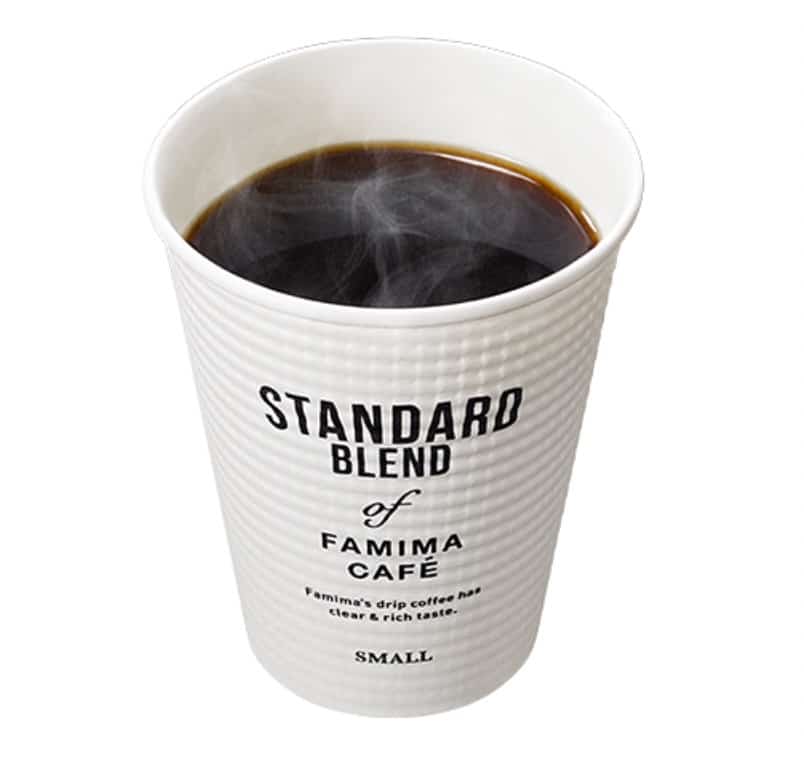
Ice Cream
“The Kombini prices seem so fixed, and far exaggerated from those you find at supermarkets, the difference made it so troublesome to source from the Kombini. A treasured moment on my way home once bought from a konbini is now purchased from a supermarket – a whole box kept within my home freezer.”
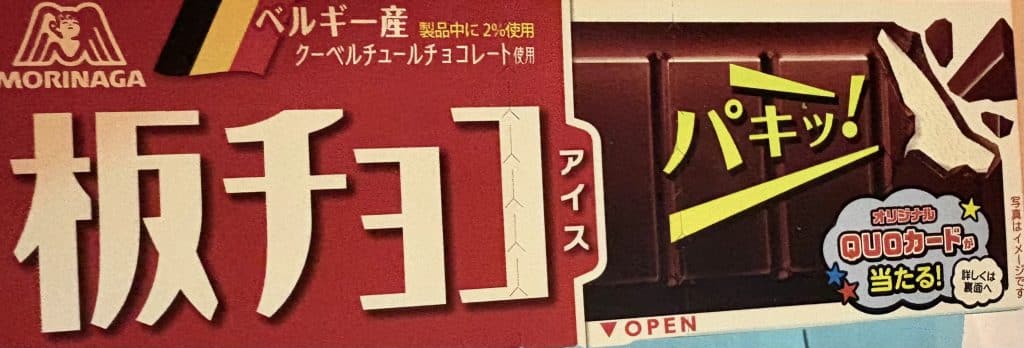
Alcoholic Drinks
“It used to be a blissful evening buying drinks from the Kombini after work. However, Convenience stores have gotten too big-for-their-britches. It’s a treasure I can no longer afford. It is much less sadness buying in bulk at mass retailers and staying within my family budget.”

Sweets
“Convenience store sweets are, these days, authentic and delicious looking luxuries but the price is not much different from sweets bought at sweet specialty stores. And if that’s the case I thought it would be better to buy them at those stores and never again at a convenient store.”

Other Comments
“Although convenient stores are convenient, if you rely on them too much, your family budget may be in jeopardy. In order to balance savings and life satisfaction why not simply go to your local grocer, drugstore, or discount shop like Gyomu Supa? Even buying online makes more sense than the cutthroat prices seen these days at convenience stores. Who is going to continue to pay these? At my local supermarket, I can pair two or three food items and a drink and still come out far ahead than the unfulfilling offerings of the convenience store.”
Osaka.com ¥1,000 Konbini Challenge: Lawson vs FamilyMart vs 7-Eleven
How Much Value You Really Get at Each Store?
We here at Osaka.com decided to have a small contest among three staff members: Wes Wesson, William Harding and Matt Kaufman.
The goal was to see how many items or how much volume we could get for our yen. Our challenge was not limited to food, and anything purchased was fair game. Below are our results along with our commentary.

What I Got at Lawson’s For ¥1,000
by Matt Kaufman
Let me be frank. I am in this competition to win, even that means humiliating the author of this article. If ‘Competitive Hot Dog Eating’ is considered a sport, then there is no reason that ‘Competitive Konbini Shopping’ can’t gain traction! Having failed at all other sports, I intend to make my name in coming up with the next viral internet sensation. ‘Flapjack Fried Chicken Sandwiches’ have nothing on me!

Lawson Haul
I’m starving, so let me just run through all the items in my bag in order of what they cost. 1. Plastic Shopping Bag. I should have brought an eco bag for the environment. Now the entire Internet will know me as a tree-killer! (That 3 yen may have put me over the top.) 2. Fried Rice Cakes, Salt Flavor. Having read Wes Wesson’s article in advance, I knew to look for the 20% discount. The world runs on inside information. Just ask Gordon Gekko in Wall Street. A very tasty snack with ako sea salt. 3. Nihon Sakari Onigorishi Sake. Attention Gen Z Bros: Drinking 9% Strongs outside the Konbini is cringe, cheugy, and dusty. Drinking Onigorishi (which literally means “Demon Killer”) slaps, drips, bets and hits different. Listen to the old head: This cheap azz hooch which comes in a juice box is the GOAT of Konbini alcohol.
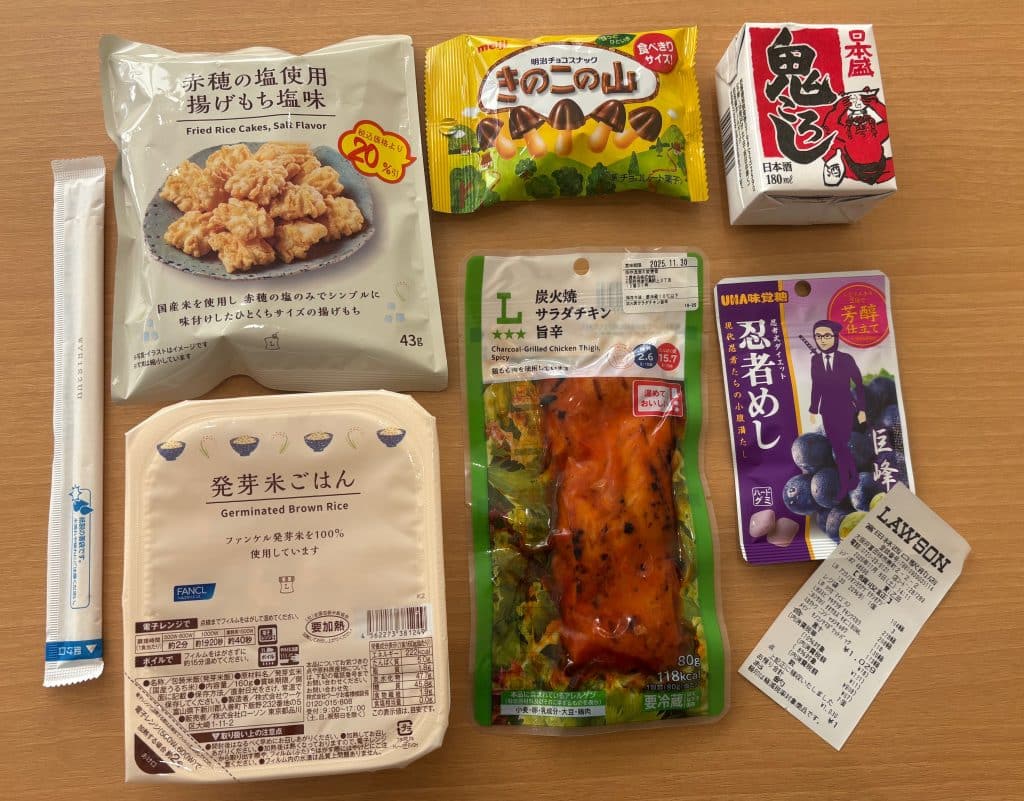
4. Ninja Meshi gummies (Kyoho grape flavor). This was recommended to me by a student. Kyoho grapes are large blackish purple domestic grapes that are known for being sweet, juicy and delicious. I’m a big fan of sour gummy candy, especially Shige Kicks, which is also made by UHA. These packed a punch and came in cool ninja packaging. 5.Meiji “Kinoko no Yama” chocolate biscuits (pocket pack). In the US we have Coke vs Pepsi and Ford vs Chrysler. In Japan, when it comes to Meiji’s beloved chocolate biscuits, there is no middle ground. You are either on Team Kinoko no Yama (Mushroom Mountain) or Team Takenoko no Sato (Bamboo Shoot Village). I have proudly pledged my loyalty to Team Kinoko no Yama. But I will admit that sometimes the allure of Bamboo Shoot Village is hard to resist.
The Next Viral Konbini Hack?
The next to items are very important in order to fulfil my lifelong dream of going viral. 6. Germinated brown rice (microwavable pack). Believe it or not, you can still eat healthy at the Konbini. I eshew the usual white rice in favor of this healthier choice filled with vitamnins and nutrients. Alone, this is almost worthless but combined with my final choice it is a cheap gourmet meal for someone on the go. 7. Charcoal-grilled salad chicken (spicy flavor). I perused the packaged meat items carefully and determined that this was the most appetizing. I cut the chicken into attractive pieces and placed them delicately on the bed of rice. Tears welled up in my eyes after I took the first bite, knowing that I had created something that nobody had ever thought of before. Now I know how the great chefs of Europe felt.
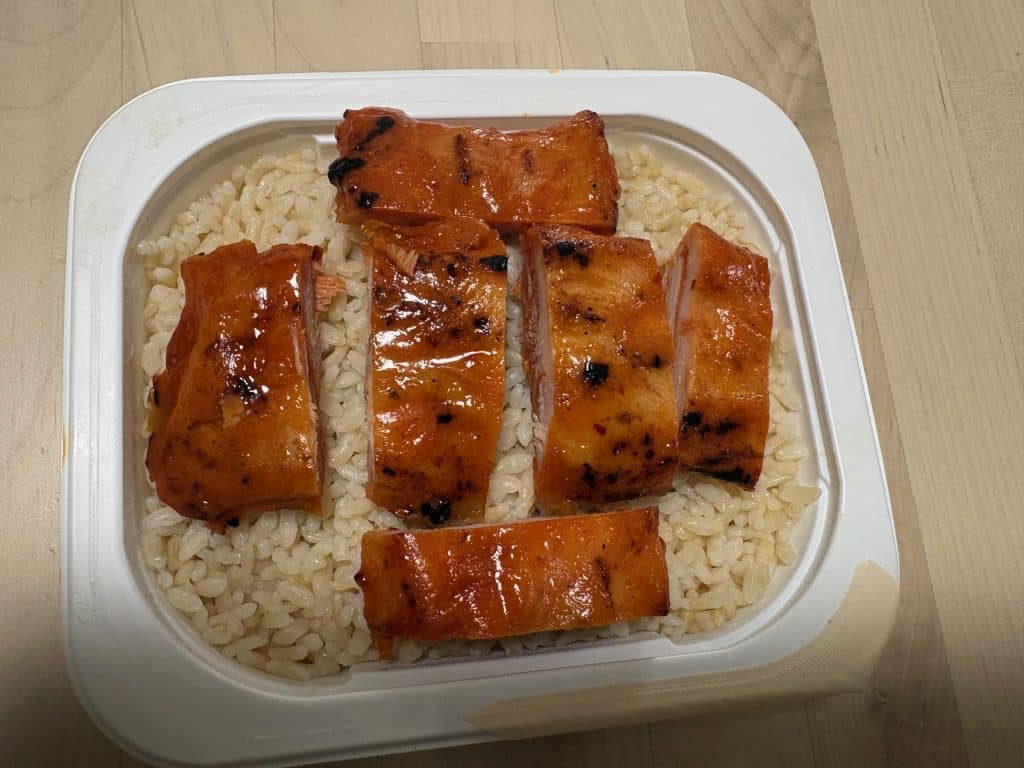
Lawson 1,000 Yen Challenge Total Damage
My hands trembled as I watched the cashier tally up items. I estimated I had chosen around ¥950 yen worth or items, but math was never my strongest subject. My heart sank when I heard the cashier cheerfully ask me for “sen nijū kyū en” or 1,029 yen. So close yet so faraway.
Lawson – Receipt Breakdown
| Japanese Name | English Translation | Price (tax included) |
|---|---|---|
| 1. レジ袋 | Plastic shopping bag | ¥3 |
| 2. 赤穂の塩使用 揚げもち塩味 | Fried rice crackers (Akō sea salt flavor) | ¥104 |
| 3. 日本盛 鬼ころし 180ml | Nihonsakari Onikoroshi sake (180 ml carton) | ¥118 |
| 4. UHA味覚糖 忍者めし 巨峰 | UHA Ninja Meshi gummies (Kyoho grape flavor) | ¥135 |
| 5. 明治 きのこの山 ポケットパック | Meiji Kinoko no Yama chocolate biscuits (pocket pack) | ¥173 |
| 6. 発芽玄米ごはん | Germinated brown rice (microwavable pack) | ¥238 |
| 7. 炭火焼サラダチキン 旨辛 | Charcoal-grilled salad chicken (spicy flavor) | ¥268 |
Total: ¥1,029 for 7 items
Tax breakdown:
- 10% taxable items: ¥121 (includes ¥11 consumption tax)
- 8% reduced-tax items: ¥908 (includes ¥67 consumption tax)
- Total consumption tax: ¥78
What I Got at FamilyMart for ¥1,000
By William Harding
FamilyMart is the best. The logo is the coolest. Unlike 7-11 and Lawson it originates in Japan. They have the delicious onigiri and it is closest to my apartment. My picks were a mix of nostalgia, sophistication, innovation and deliciousness. Tried and true choices, overlooked gems and future classics

FamilyMart Haul
1. American Dog. What we call a ‘Corn Dog’ in the US. Delicious! What is impressive is the ketchup and mustard dispenser you squeeze together to perfectly dress the dog. 2. Cratz Bacon Pepper Flavor. An Otsumami a snack best paired with alcohol. A pretzely bite with crunchy, bacon-like taste. 3.Umaibo is a small cylindrical puffed corn snack. They come in many flavors often highlighting regional dishes of Japan. Mentaiko, spicy pollock roe famous in Kyushu, is my favorite! It is sweet and spicy.
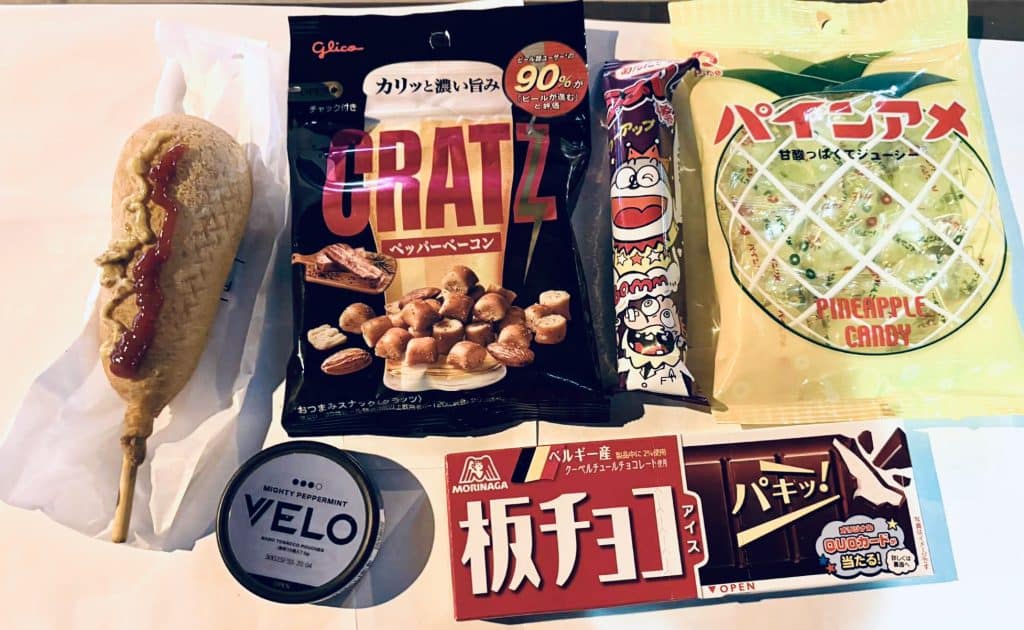
4. Pine Ame, pineapple candies, are made right here in Osaka. I’m a big fan! 5. Velo is a smokeless nicotine pouch much like the brand Zyn, which has become very popular in the US. FamilyMart is the only retailer in Japan that I know of that sells these. (You must be at least 20 years of age to buy this.) This one, peppermint flavored, is the strongest at a whopping 8 mg. of nicotine. 6. Morinaga Belgian Chocolate Ice Cream Bar. Excellent milk chocolate and vanilla ice cream. Enough said.
FamilyMart ¥1,000 Challenge: The Damage
I was ¥138 over budget. If it was summer, I would have substituted the ice cream for a flavored ice dessert. Those don’t have chocolate or dairy so they are cheaper, cool, and refreshing in summer.
| Item | Description | Price (incl. tax) |
|---|---|---|
| 1. アメリカンドッグ | American Corn Dog | ¥145 |
| 2. ベロMP ミントメインテ | Velo MP Mint Maintenance (Nicotine pouch) | ¥340 |
| 3. うまい棒 めんたい味 | Umaibo – Mentaiko Flavor | ¥16 |
| 4. パインアメ | Pine Candy | ¥170 |
| 5. クラッツ ペッパーベーコン | Cratz Pepper Bacon Snack | ¥251 |
| 6. 板チョコアイス | Chocolate Bar Ice Cream | ¥216 |
Subtotal (10% items): ¥340
Tax (10%): ¥30
Subtotal (8% items): ¥798
Tax (8%): ¥59
Total: ¥1,138 (6 items)
8% Tax Items: All food and snacks (軽減税率対象).
10% Tax Items: Tobacco product (Velo MP Mint Maintenance).
What I Got at 7-Eleven for ¥1,000
By Wes Wesson
I know the other guys are gonna be out for blood in this contest. I further know that they will most likely be on their best behavior attempting to stay within the limit. And if I had to bet, they will not choose the regular beer-swilling, fried food eats as they usually would- items that will shoot the price sky high in the first go. No! They will be crafty! Cunning! I’ll even bet you readers that fellow staff writer Matthew Kaufman’s choices will forgo a greasy, blistering hot fried chicken (which I know he usually never turns down) in favor of something else cheaper and “healthier” like a wrapped veggie-chicken type sausage from the cold case! You can bet he William Harding will be flying below radar attempting to pick up the cheapest possible things they can find. I too will be definitely keeping my eyes peeled for discounts.
No calculators are allowed in this so I’ve got to how am I thinking cap on and remember to add the tax!

7-Eleven Haul
I decided to include one selection from daily necessities just to show, as I have mentioned,that konbini have a good amount of truly convenient items that you might not find at convenience stores back home.
Since I had just cleaned the grease trap of my sink back at home with the only sponge I had left, it made sense then to grab this truly great deal of 1. Kitchen sponges-only 100 yen!Next, a bag of Seven and I Holdings brand 2. Caramel Corn seemed to scream my name from the aisle cap! A time cell was going on and I took advantage of the 20% discount. And if that’s not sweet enough to melt your teeth, backed that up with a mini 3. Snickers bar grab! A sugar binge is not complete without a Georgia Brand
4. Emerald Mountain canned coffee, so, swoosh, into the basket with one! My next find was my favorite crackers from back home 5. RITZ, and you can’t have those without pairing up a 6. Nama-Ham-wet cured ham and a 7. Chitara-cheese sandwiched between laters of squid combination! Thinking I’d need a little bit more salt to combat the sugar ratio in my choices, I have the children’s snack section, being on the very last of my perceived limit, ¥15. 8. and 9. Kabayaki-san Taro sweet fish sheet snacks (flavored with eel sauce) x two! Then it was off to the register to see what the damage was!
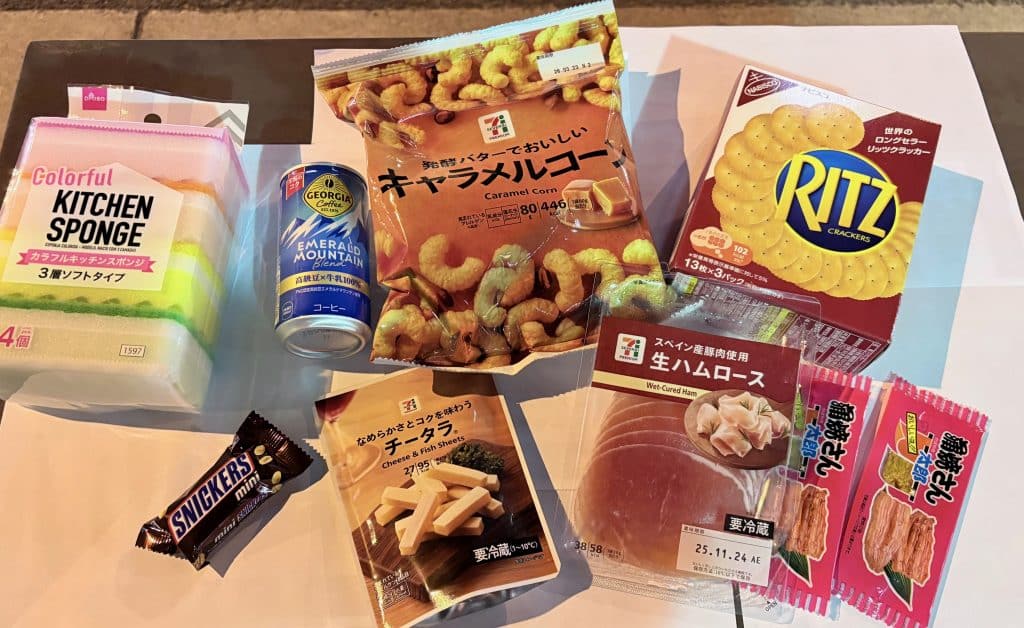
7-Eleven ¥1,000 Challenge: The Damage
Somehow, destiny had, in her own divine way, simply shined on me that evening.It seems that somehow in the world of mathematical magic those last two items-PLUS a 10. 3 yen bag had somehow brought the amount to a perfect ¥1000. Right-on-the-money, Honey!
The fellows and I had agreed to only a 10 minute shopping limit at each store. We had to meet back in the central arcade within 20 minutes. I took care not to loose my receipt as the boys would never believe this if I told them so without it! As proof, I am holding it in the picture below!
Never in the world could I have added it up in my mind that perfect! I even leaped for joy leaving the jaw dropping proprietor, utterly speechless! “We’ve got this contest going, ¥1000 limit, “I explained. I got a smile then. I waved at her as I went out the door on a trot.
| Item | Description | Price (incl. tax) |
|---|---|---|
| 1. プレミアム キャラメルコーン | Premium Caramel Corn | ¥118 |
| 2. ダイソー カラフルキッチンスポンジ(4個) | Daiso Colorful Kitchen Sponges (4 pcs) | ¥100 |
| 3. リッツクラッカー | Ritz Crackers | ¥220 |
| 4. 7P 生ハムロース | 7-Premium Prosciutto Ham | ¥178 |
| 5. 7P コクを味わうチータラ | 7-Premium Rich Cheese Tar | ¥108 |
| 6. ジョージア エメラルドマウンテン(185g) | Georgia Emerald Mountain Coffee (185g can) | ¥133 |
| 7. マース スニッカーズミニ | Mars Snickers Mini | ¥58 |
| 8. 蒲焼さん太郎 ×2 | Grilled Fish Snack ×2 | ¥30 |
| 9. 値引額 | Discount | -¥23 |
| 10. バイオ50 レジ袋(中) | Bio 50 Shopping Bag (Medium) | ¥3 |
Subtotal (8% items): ¥822
Tax (8%): ¥65
Subtotal (10% items): ¥103
Tax (10%): ¥10
Total: ¥1,000 (7 items)
8% Tax Items: Snacks, candy, and food products.
10% Tax Items: Household goods, beverages, and the plastic bag.

We want YOU to Be a ¥1,000 Konbini Challenge Judge!
Among the three of us, we agreed that the winner of the contest would get a beverage of their choice. The only problem is, we do not have a judge! That is where you, our readers, come in. Cast your vote using the poll at the bottom of this article and choose who you think came up with the best bang for his yen (with special consideration given for staying within the ¥1000 limit, naturally). We also encourage you to try this challenge with your own crew and share your experiences in the comments below.

Konbini: Final Thoughts
In conclusion, can a wide variety of things still be had for under ¥1000? Certainly. Are they the same exact choices I would’ve made five years ago- when things were so much less expensive? Certainly not. Five years ago, you could easily cover an item from the daily necessities a whole entrée from the hot shelf, a beer, a bag of chips, and maybe even a candy bar for ¥1000 or under. Basically you didn’t have to think about it. Now, if you wanna stay under ¥1000, you certainly have to do some sort of math!
I’ll make one last point here in saying that foreigners who are coming in from the states, Europe, or Australia will quickly point out that things here, whether ramping up in price or not, are still not near as pricey as it is these days back in America. That particularly, consumables in Japan are so much cheaper than other G20 countries where prices, as we speak, are continuing to skyrocket. If we can find a deal better in the supermarkets, then shop there for deals. And if it’s convenience that was seek, we can buy that too at whatever price we find it in the all convenient konbini!
